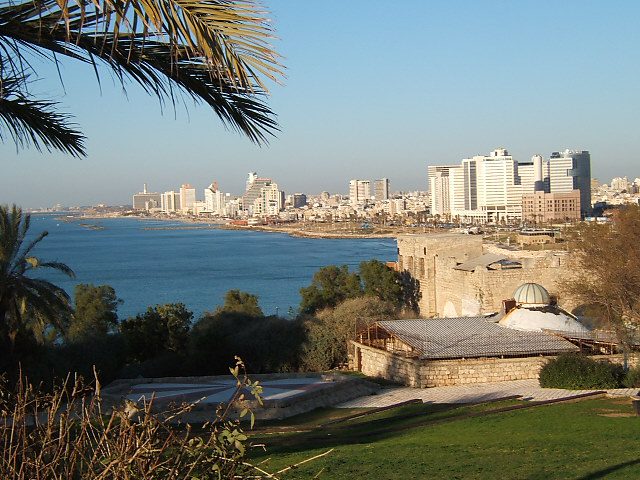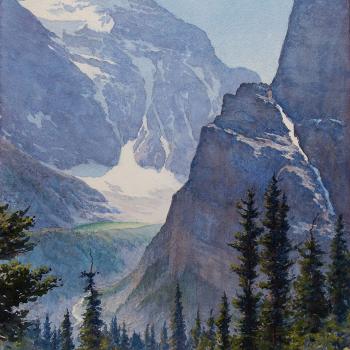
Wikimedia Commons public domain image
Continuing with the current draft of the last chapter of my book on Islam for Mormons:
Their travels took them to England, Holland, Belgium, France, Bavaria and other parts of Germany, Austria, Russia, Greece, Egypt, Turkey, and Syria. The journey was strenuous, but the little party of Latter-day Saint tourists seems to have retained a sense of humor. In Egypt, their Coptic Christian guide took them to an area near the modern city of Heliopolis, the biblical On, where he showed them an ancient sycamore tree. This, he informed them, was the very tree under which Mary, Joseph, and the infant Jesus had camped during their flight into Egypt. Mary had bathed in the nearby well and, although it had only given brackish and undrinkable water before, from that time forward its water had become sweet and good. President Smith tasted it and agreed that the water was excellent, reminding him of “the big spring at Saint George.” There was just one thing lacking, to his taste. “I remarked to the man I really wished she had made it cold while she was about it, for a drink of cold water would have been very refreshing just then. This cost me one franc.”[1]
In Palestine itself, the apostolic party visited the traditional home of Simon the Tanner in Jaffa, where the Apostle Peter had received his important vision of the sheet let down from heaven that opened the way for the preaching of the gospel to the Gentiles. While there, they asked the Arab caretaker of the house whether Peter had been a Muslim. Yes, he replied, pointing to a mihrab niche in the wall of the building as the place where the apostle had prayed.[2] They saw the beautiful orange groves in the vicinity of Jaffa. They spent a night at the monastery of Mar Saba near Bethlehem, and, in that town itself, they went to the Grotto of the Nativity, which local tradition identifies as the precise spot of Christ’s birth. They were struck by the remarkable similarity between the Dead Sea and their own Great Salt Lake. They noted that Palestine’s Jordan River was smaller than Utah’s and rather barren in its surroundings. “We used to sing about the flowery banks of Jordan,” said President Smith, “but it takes off the romance to go and see them.”[3] Lorenzo Snow especially liked the Arab town of Nablus. He was attracted to its setting in a relatively verdant and well-watered valley, surrounded by olive trees, fruit orchards, and various gardens, as well as by its white domes, its mosques, and its many minarets. But the hilly scenery, while picturesque, made for difficult travel. “I have seen a good many rough roads in Utah in the mountains,” recalled President Smith, “but of all the rough horseback riding I ever did see, I think that Palestine has the premium.”[4] Still, beyond all the discomforts of touring in the Holy Land, there was the marvelous sense, felt by hundreds of thousands of pilgrims before and since, of walking in the very footsteps of Jesus and the personalities of the Bible. “I cannot communicate …to any extent,” President Smith later remarked,
the impressions I felt at the time. I had no doubt that I passed over the grounds where the Savior and his Apostles, and the Prophets, kings and nobles of Israel had lived, although I did not believe a great deal about the identical spots set down by the monks, yet I was satisfied that I was in the localities in which the great events of scripture took place.[5]
[1] Journal of Discourses 16:91.
[2] Journal of Discourses 16:92.
[3] Journal of Discourses 16:100. Mark Twain was similarly unimpressed by Palestinian geography. “When I was a boy,” he recalled in his travel memoir The Innocents Abroad, “I somehow got the impression that the river Jordan was four thousand miles long and thirty-five miles wide. It is only ninety miles long, and so crooked that a man does not know which side of it he is on half the time… It is not any wider than Broadway in New York. There is the Sea of Galilee and this Dead Sea— neither of them twenty miles long or thirteen wide. And yet when I was in Sunday school I thought they were sixty thousand miles in diameter.” See Mark Twain, The Innocents Abroad/Roughing It (New York: Literary Classics of the United States, 1984). We have many misconceptions about the region. Every Christmas, Latter-day Saints sing of a sacred event that took place, “Far, Far Away on Judea’s Plains.” But Judea is hill country, with hardly a flat spot in it.
[4] Journal of Discourses 16:98.
[5] Journal of Discourses 16:100.
Posted from Paris, France











